Abrams tanks in service with the Ukrainian Armed Forces became the reality of a fantastic scenario that couldn’t be imagined a few years ago.
For the United States, M1 Abrams is an important component of the U.S. military and plays an important role in protecting national security.
The United States has thousands of these tanks. In 2022, there were 2,645 vehicles in service and 3,450 in storage.
In January 2023, U.S. President Joe Biden announced that he would send 31 American Abrams main battle tanks to Ukraine.
The United States officially approved the transfer of the first batch to Ukraine in August 2023.
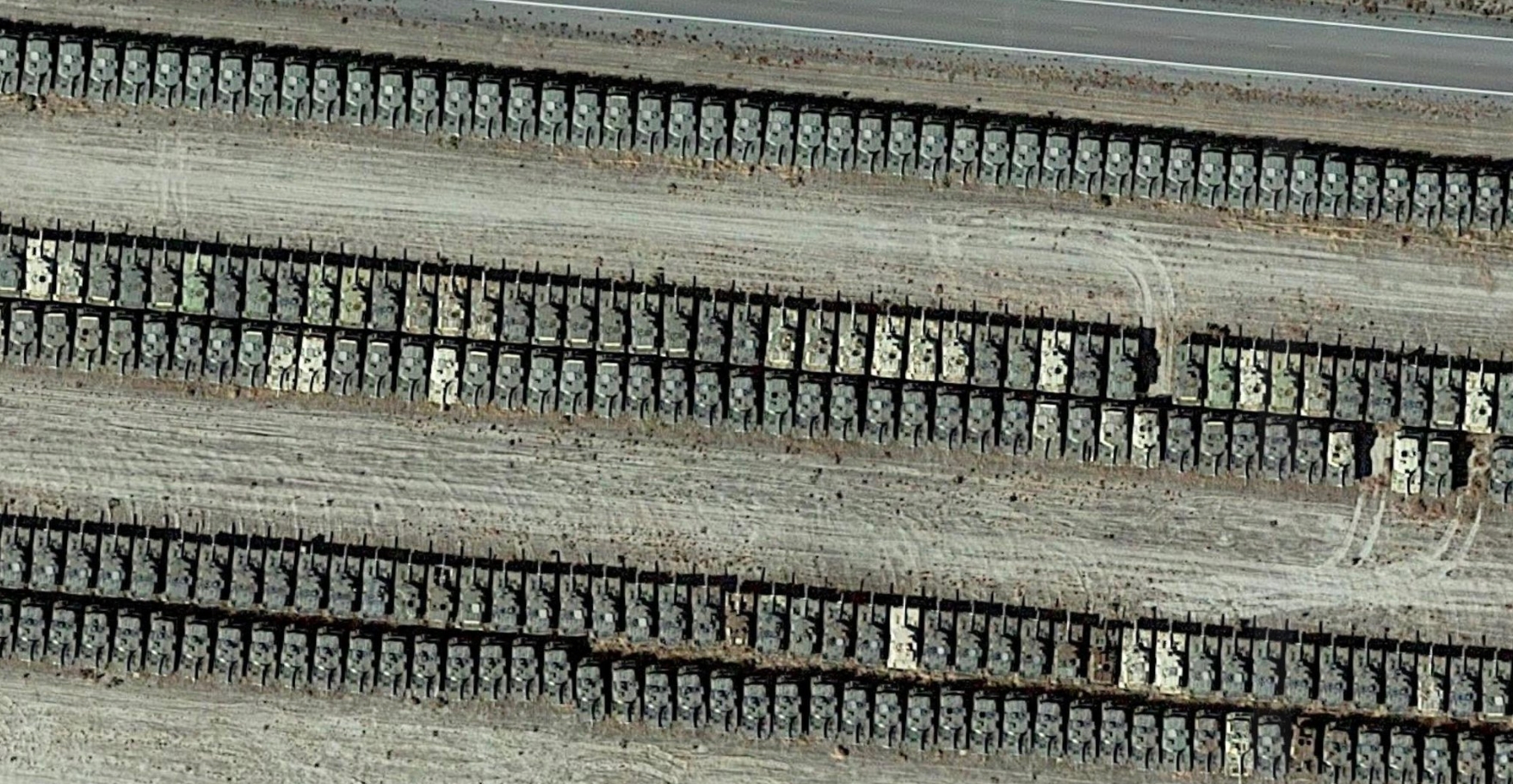
You can supply different weapons to different countries, but it makes no sense if there are no trained crews and the necessary infrastructure.
The Ukrainian military was trained on an Abrams M1 at an American military base in Germany.
The training program involved not only training crews, but also training maintenance personnel.
The first tanks arrived in Ukraine in the second half of September 2023. In October, American officials said that 31 tanks were delivered to Ukraine.
It also took time to prepare the necessary support elements on site.
The Ukrainian military command had to determine when and where to use those tanks to achieve the greatest effect against the Russian invasion forces.
The Abrams tanks went to the 47th Separate Mechanized Brigade, which already had experience using American Bradley IFVs in combat.
For dispatch to Ukraine, non-new Abrams M1A1s were chosen in the special SA (situational awareness) version.
The M1 Abrams tank is one of the most powerful armored combat vehicles in the world. Its development began in the late 1970s, when the U.S. Army realized it needed a new tank to replace the obsolete Patton M60.
In 1979, General Dynamics was awarded a contract to build a new tank, which was named after General Creighton Abrams, a former Commander-in-Chief of the United States Army who commanded military operations in the Vietnam War.
The first prototypes of M1 Abrams with a 105mm gun were completed in 1980, and the first production models were delivered to the U.S. Army in 1980.
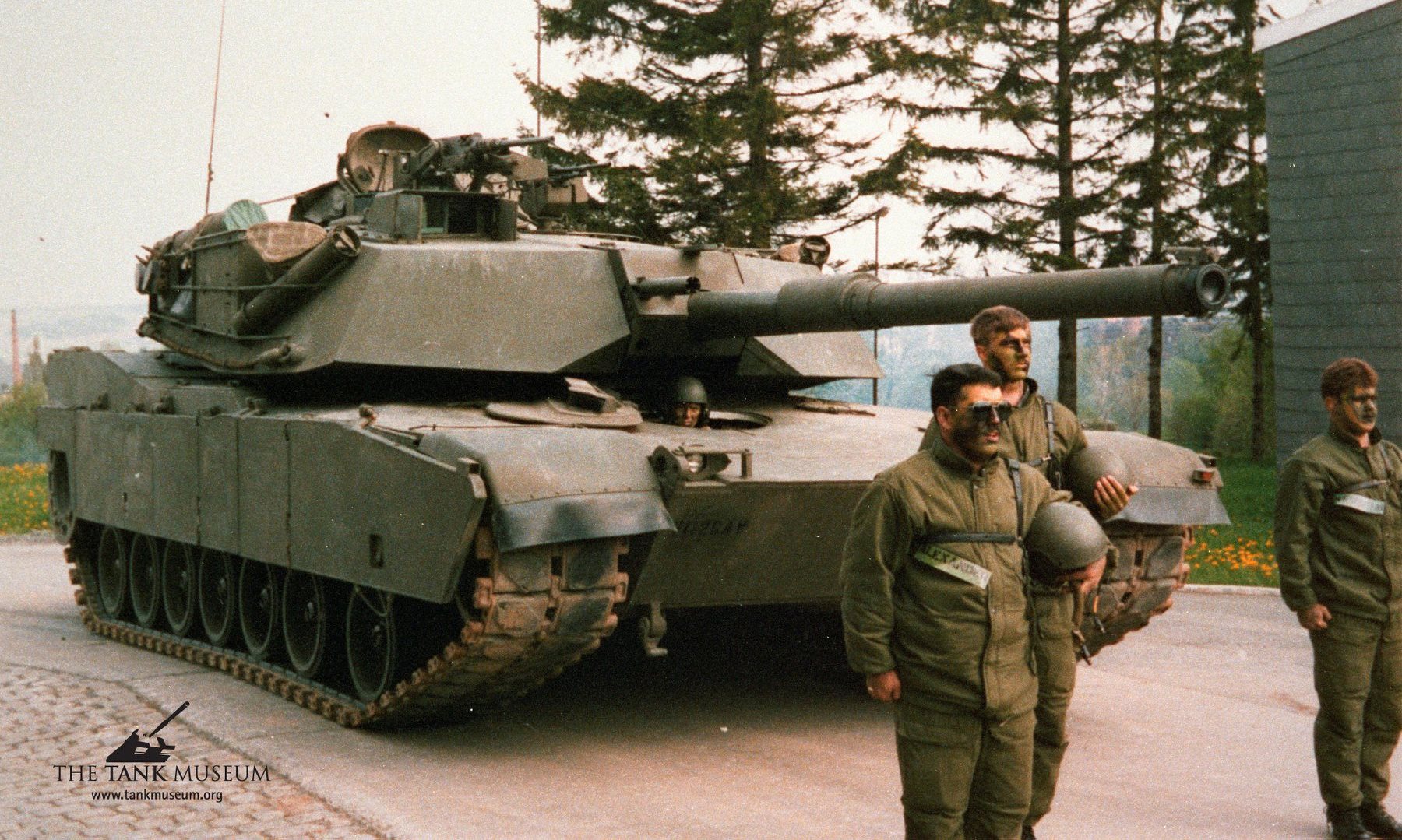
The M1 Abrams tank was designed with several key features that distinguished it from previous generations of tanks.
It was equipped with a powerful gas turbine engine, which gave it high maneuverability and allowed it to move at high speeds.
It had high-end armor that provided high protection. It was also equipped with weapons that could operate in day and night mode.
Abrams is constantly being upgraded and its manufacturers are working to improve its protection, armament and maneuverability to keep it competitive in modern combat conditions.
There are several modifications of the M1 Abrams tank:
Modifications may vary depending on the customer country and specific requirements.

After the installation of a 120mm gun M1A1 on the tank, the problem arose in providing combat vehicles with the necessary amount of ammunition.
Mass production of 120mm tank ammunition in the United States began in 1985.
It was initially planned that the American tanks for Ukraine would be purchased with funds from the Ukraine Security Assistance Initiative.
Then they decided to withdraw tanks from the U.S. Army reserves. Before being sent to Ukraine, they were repaired and converted.
Initially, Ukraine planned to transfer M1A2 tanks, in which the depleted uranium in the composite armor was replaced by conventional armored steel, representing a typical American modification for all exported Abrams tanks.
In this regard, the United States could not supply Ukraine with M1A2 of those available to the U.S. armed forces. Instead, they had to manufacture them in a special export modification at the only American tank factory, Joint Services Manufacturing Center (JSMC) in Lima, Ohio, which is operated by General Dynamics Corporation.

In fact, after 2000, all M1A2 tanks were not produced from scratch, but were converted from M1/M1A1.
Thus, the production of a set of 31 M1A2 tanks for export Ukrainian modification would inevitably take quite a long time.
The transferred M1A1 SA are equipped with a M256 120mm smoothbore gun with 40 rounds of ammunition.
On the M1A1 SA, an improved laser rangefinder and thermal imaging camera are built into the main gunner’s sight, the sight has stabilization in two dimensions.
The rangefinder is able to accurately calculate the range from 200 to 7990 meters, with effective range – 3990 m.
The tank commander also received a new stabilized remotely controlled combat module, which allows aiming fire from a heavy machine gun in motion.
In addition, M1A1 SA of the Armed Forces of Ukraine are equipped with a M19 Abrams Reactive Armor Tile-1 (ARAT-1).
ARAT is included in the Tank Urban Survival Kit (TUSK).
The M19 was taken into service by the United States Army in 2006 to protect tanks during urban hostilities.
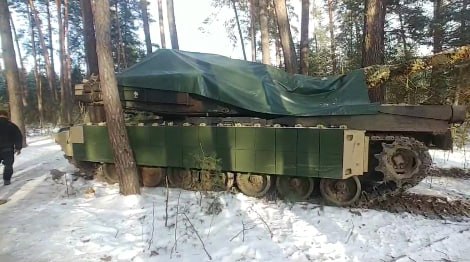
It is assumed that M19 can protect the side of the tank from HEAT ammunition with a penetration of about 500-550 millimeters.
Protection can be quickly installed manually, and its elements can also be quickly replaced in the field.
The kit meets the requirements of MIL-STD 2105. The collateral damage is minimized due to careful analysis and tests aimed at eliminating detonation of neighboring reactive armor units.
ARAT-1 protects the tank from HEAT ammunition, debris and small arms.

The principle of action is that an implosion-shaped charge affects the metal plates, initiating an explosive layer inside, causing the two metal plates to fly in different directions. Each of the sides accommodates 32 units, there is an optional possibility of their placement on the turret.
The United States sends depleted uranium projectiles to Ukraine for these tanks.
This is not some exotic weapon, but a standard munition, which is used by many armies of the world.
“Depleted uranium” means a leftover substance after the removal of the radioactive isotope of uranium-235 for use as a nuclear fuel or weapon.
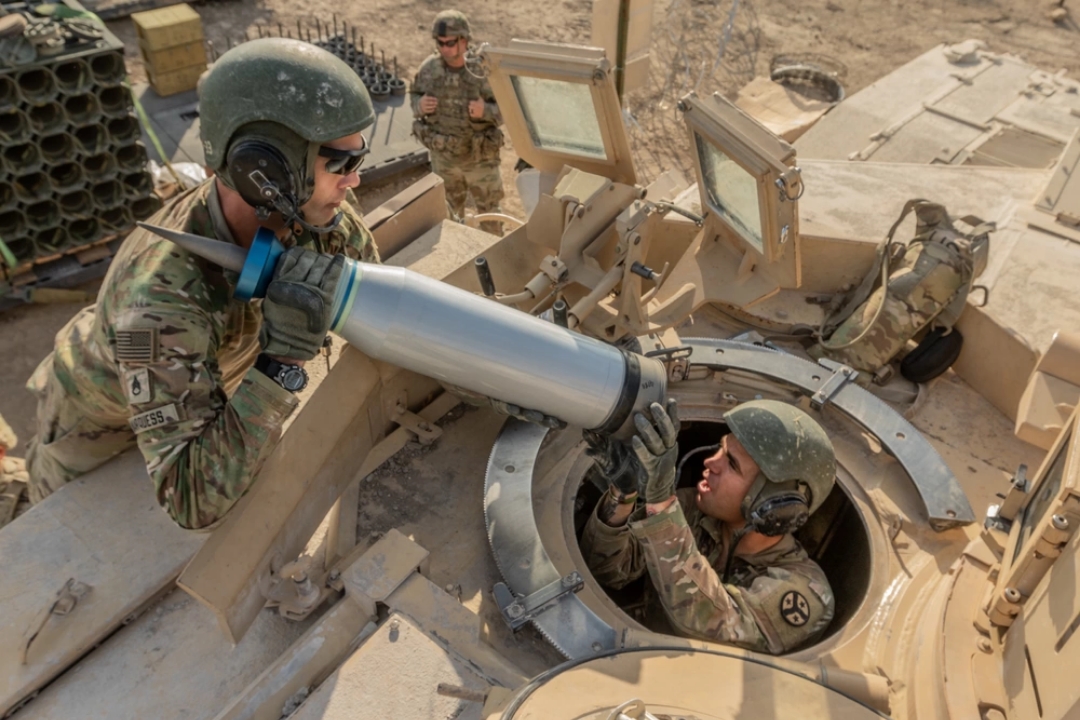
After the removal of the active isotope, this metal becomes less radioactive than natural uranium and its ore and has 40% less radiation.
The main military application of depleted uranium is armor-piercing ammunition. The use of this metal in ammunition is associated with its properties – high weight, density and pyrophoricity.
Due to these characteristics, the projectiles have a high armor-piercing effect and cause significant armor destruction.
In countries with an advanced nuclear industry and large accumulations of depleted uranium, such as the United Kingdom, the United States, and France, its use in the defense industry is much cheaper than the use of alternative materials, such as tungsten.
For the Abrams tank, an armor-piercing sub-caliber projectile with a depleted uranium penetrator is standard.
The U.S. Army currently uses its modern versions of M829A3 and M829A4.
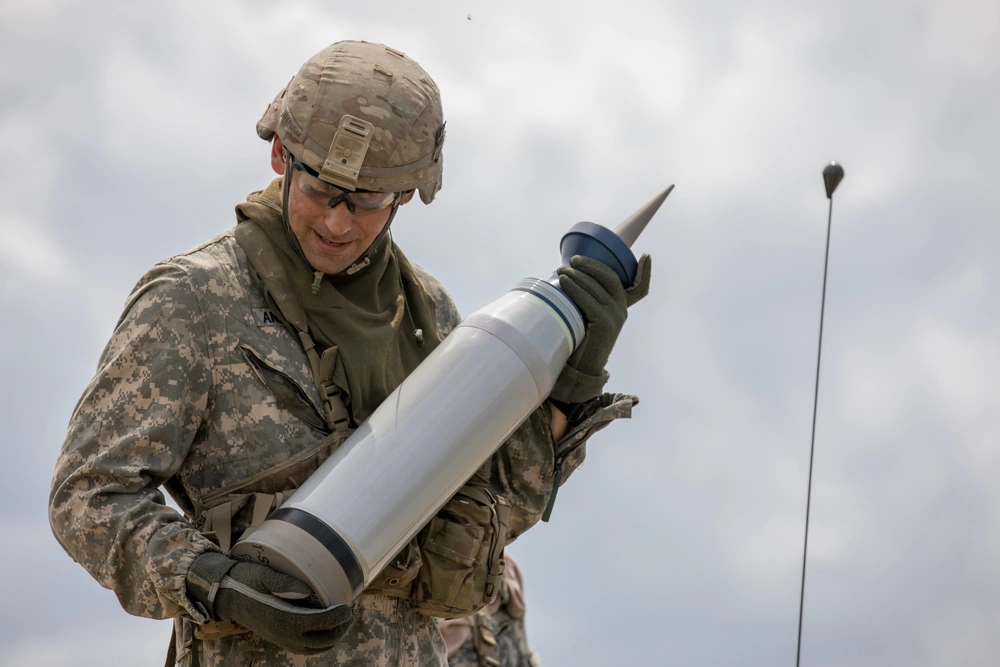
M829A was created in the early 2000s. The total length of the core is 800 mm, with 10 cm being the front of the steel and 70 cm being the rod of depleted uranium.
The diameter of the core is 25 mm, and the weight is up to 10 kg.
At an initial speed of 1550 m/s, such a projectile is able to penetrate at least 700 mm of tank armor at a distance of 2 km.
Currently, the latest version of the M829A4 is in serial production. The shell received improvements that allowed it to penetrate even thicker tank armor.
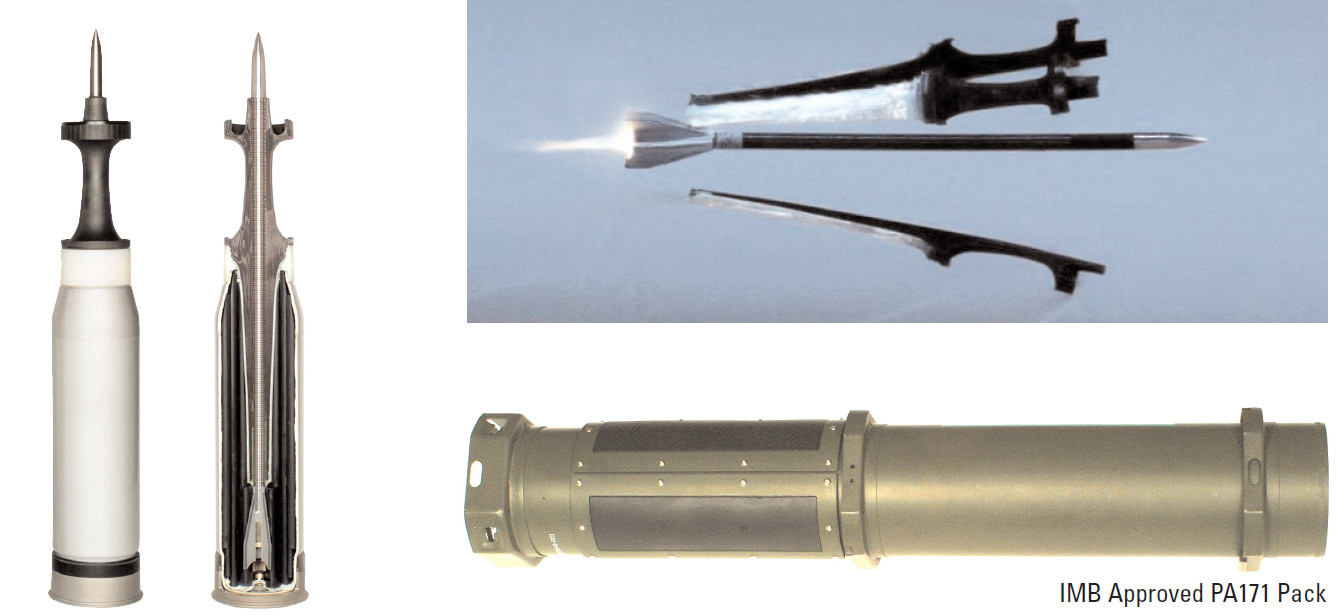
The main problem with depleted uranium is the inhalation of its dust generated by the destruction of a projectile.
As a result of an impact or explosion, uranium oxide is formed, which can theoretically get into the human lungs and cause damage.
A study by the Royal Society of Science working group on the dangers to health from depleted uranium munitions concluded that the health risks caused by the use of depleted uranium in weapons can be considered negligible.
In February 2024, the Ukrainian command sent American tanks M1A1 SA Abrams to the Avdiivka sector in the Donetsk region.
They went there together with the M1150 Assault Breacher Vehicles (ABV), an armored mine- and explosives-clearing vehicle based on the M1 Abrams tank.
They were equipped with a M58 MICLIC rocket-projected mine-clearing line charge.
The 47th Brigade chose the tactic of a “quick raid,” when the tank quickly left in the direction of the invaders’ positions, struck the invaders, and drove back.
If possible, Abrams tanks should be constantly on the move during combat exit and stop only before firing.
Such tactics are supposed to give the Ukrainian infantry powerful fire support and stop the advance of Russian assault units.
“Tanks perfectly show themselves on the battlefield, and we certainly do not intend to hide from the enemy the thing that usually makes him to hide himself,” the 47th Brigade said.
At the end of February 2024, with such tactics, Abrams was actively operating near the village of Berdychi in the Avdiivka direction.
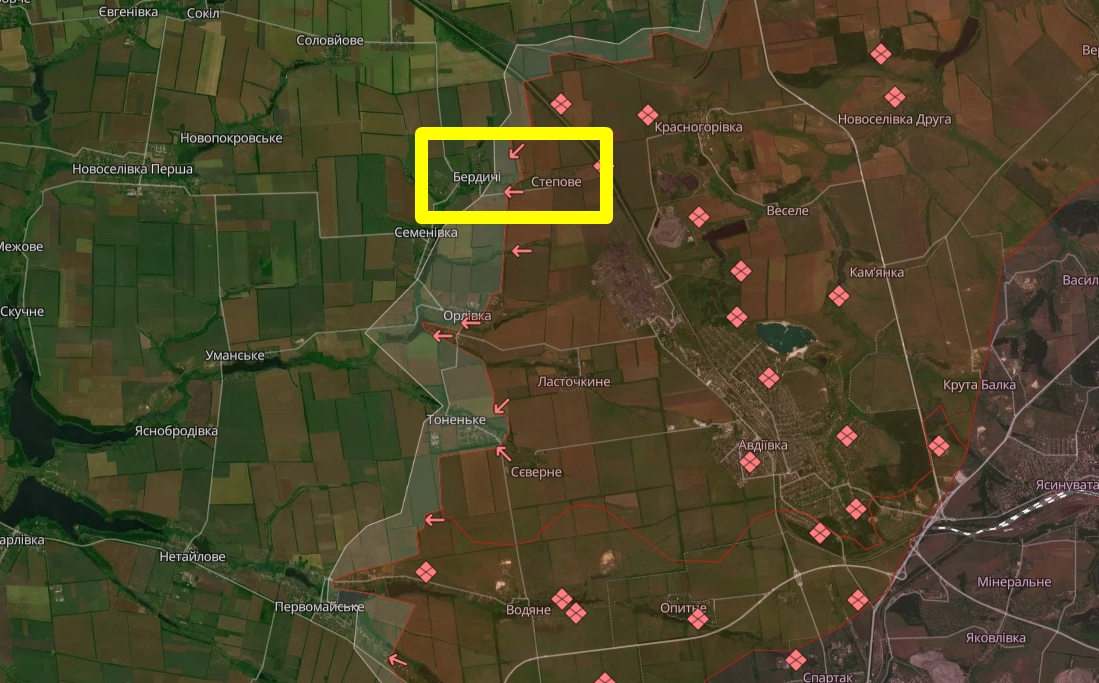
In one of the combat missions, the tank was hit by an anti-tank guided missile, but it did not suffer significant damage from the hit and pulled away under its own power.
However, the invaders begin to track movements and, when detected, launch strike FPV drones that hit vulnerable places.
Thus, near the village of Berdychi, on February 26, the Ukrainian military lost the first Abrams in the Russian-Ukrainian war.
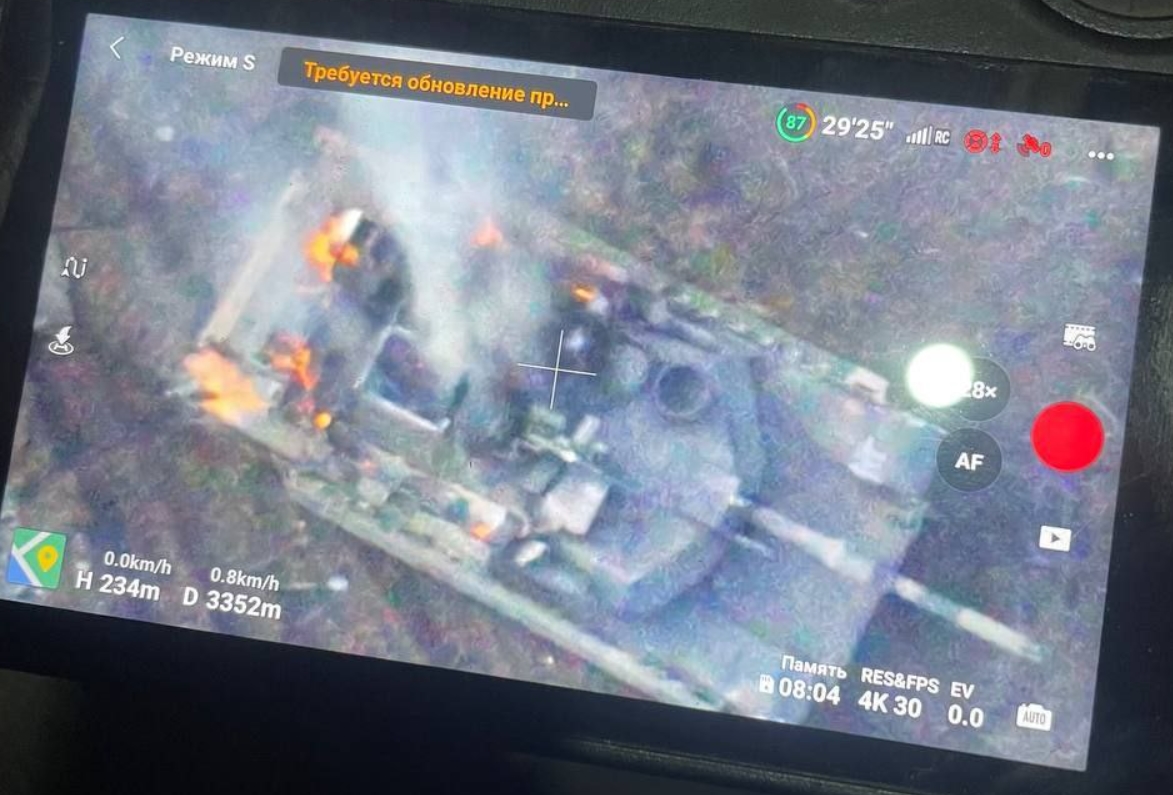
On that day, 2 FPV drones hit Abrams. The first drone hit the engine of the tank and stopped it, the second drone hit the back of the turret, which led to the ignition of ammunition in the aft compartment.
This incident again demonstrated the superiority of Western tanks over Soviet ones: the tank did not detonate, and the entire crew was able to escape.
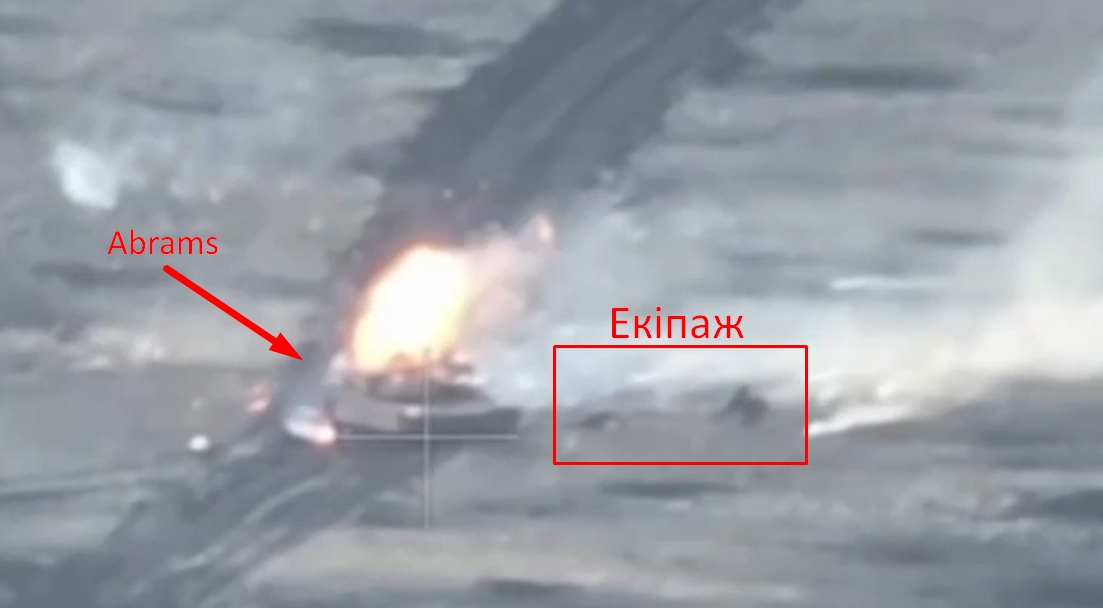
However, in such cases, the invaders then fire not at the tank but at the crew, who retreat to their positions on foot.
The second tank was lost on April 2, near the same settlement. This time, the Russian infantry managed to tear the tracked belt of the tank from anti-tank weapons. The crew left the tank.
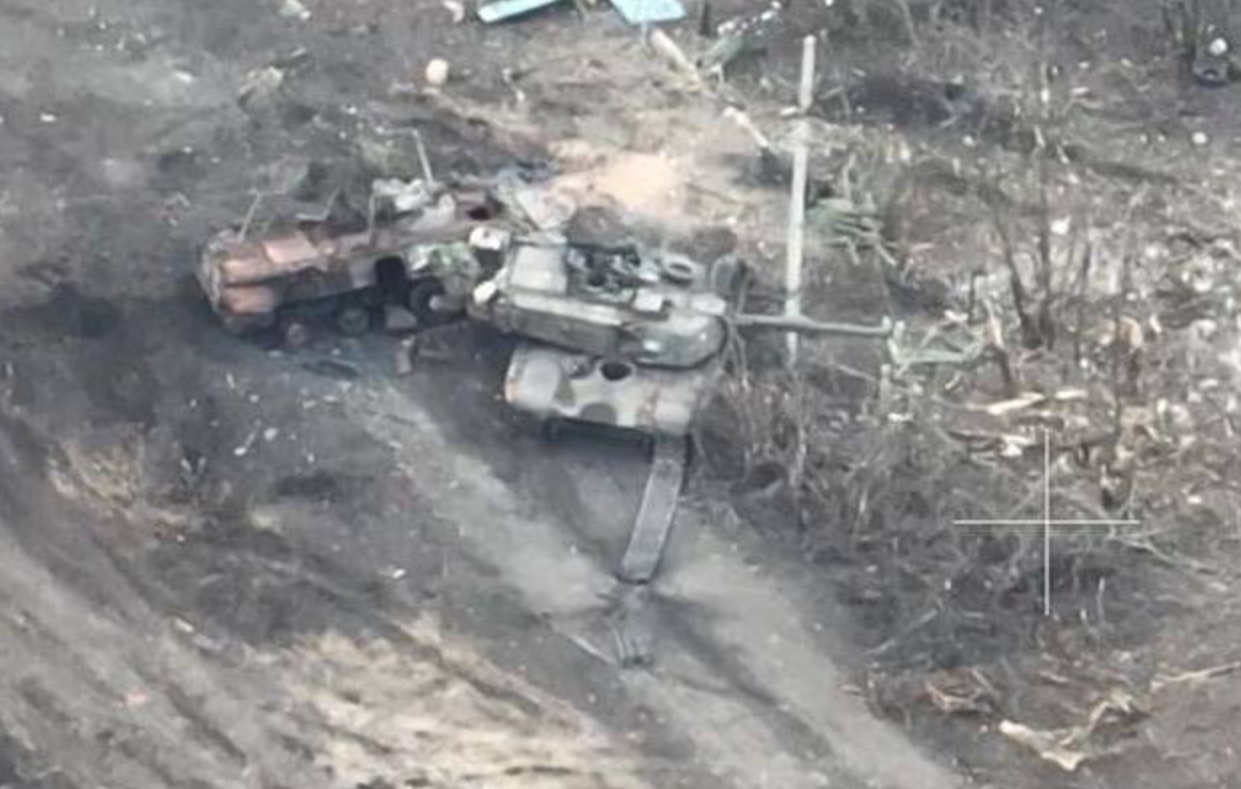
Then FPV strike drones start working on the tank, striking it.
The third and fourth lost Abrams were stopped with anti-tank missile systems also in the Avdiivka sector. Finished off with FPV drones.
For the Russians, these American tanks became such a priority target that sometimes they fell into traps near the knocked-out Abrams. They died while taking selfies with the tank, as Ukrainian drones began to drop explosives on them.
The fifth known loss of Abrams M1A1 SA with the ARAT occurred on May 4 near the village of Novopokrovske in the Donetsk region.
This time, the Russian invaders used a drone with HEAT munition. After that, artillery began to work on the tank.
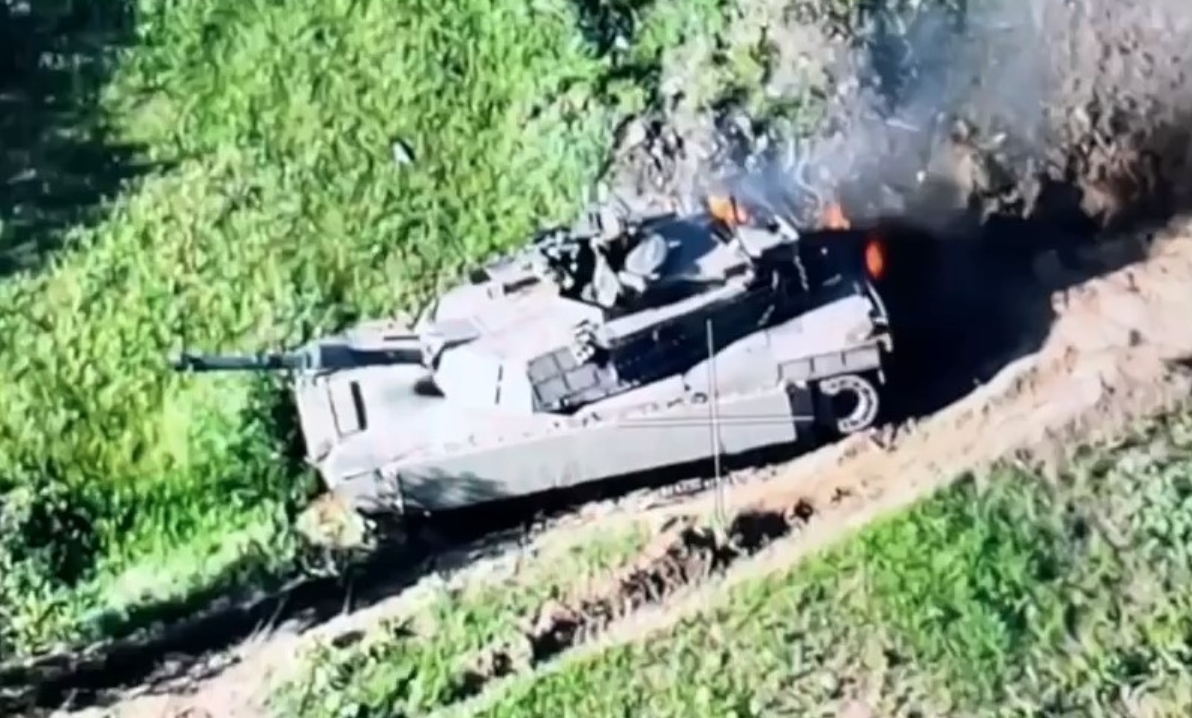
It is worth noting that there is also a problem with the means of evacuating heavy tanks weighing 60-70 tons.
They are almost impossible in such cases to take from the battlefield.
Although the United States has provided few of these tanks, the Americans have the opportunity to provide Ukraine with new batches of these vehicles when even more Ukrainian crews gain experience.

M1A1 Abrams SA demonstrated their main advantage over Soviet/Russian tanks: they are not torn to pieces after hitting, and crews are able to evacuate. Tanks also have mobility, maneuverability, reliability, modern systems and a powerful gun.
Підтримати нас можна через:
Приват: 5169 3351 0164 7408 PayPal - [email protected] Стати нашим патроном за лінком ⬇
Subscribe to our newsletter
or on ours Telegram
Thank you!!
You are subscribed to our newsletter